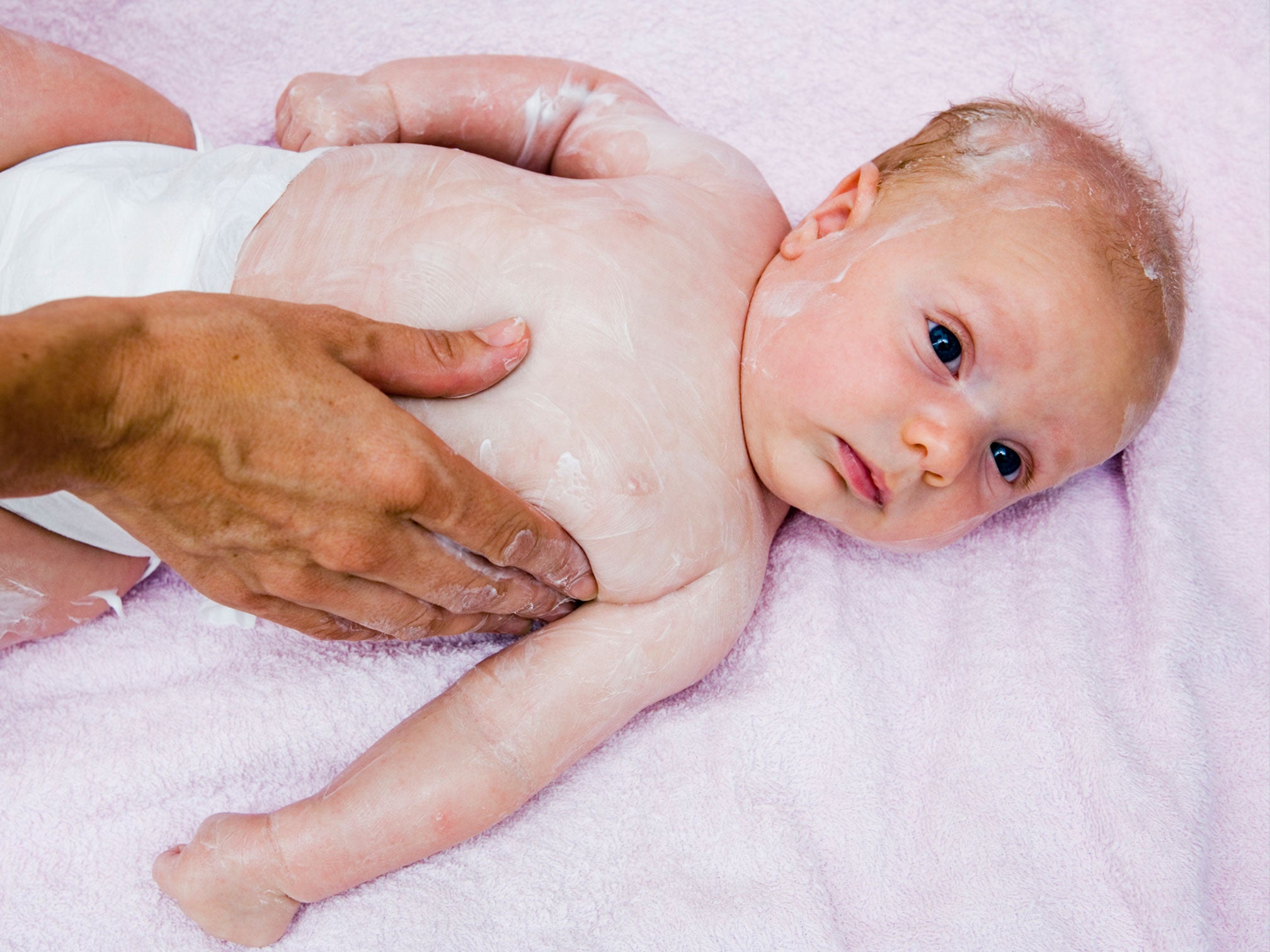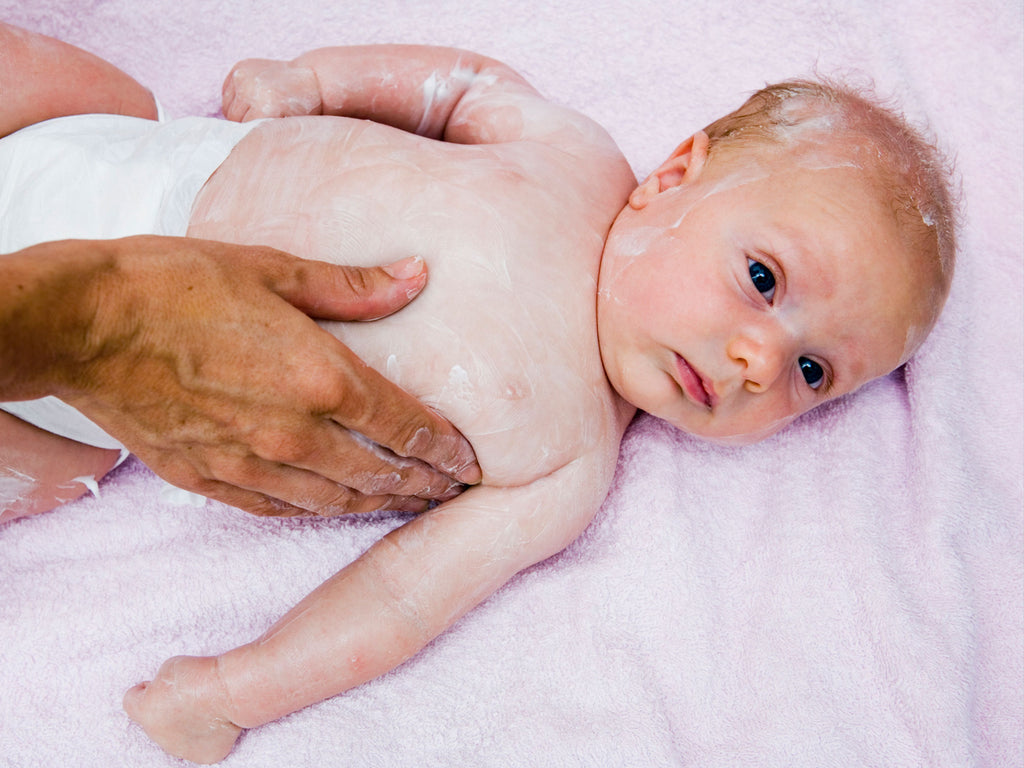Recent guidelines from the MHRA warn against the use of aqueous cream as a leave-on emollient; they say this type of cream should not be used on children as it can make eczema worse, causing skin irritation, burning, stinging and itchiness.
We look at the facts behind the official aqueous cream warning and see what you can use instead, to keep sensitive skin in healthy, well-hydrated condition - without the irritation!
What Is Aqueous Cream?
Aqueous cream is simply a mixture of water and oily emollient, used as a cleanser or moisturiser for dry skin.
Why Is Aqueous Cream Prescribed For Eczema?
Aqueous cream is often prescribed as a soap substitute for people who don't tolerate soap or foaming hand wash which can dry skin out and cause damage. You rub the cream into your hands and wash it off, and although it doesn’t lather like soap, it does cleanse the skin.
Sometimes aqueous cream is also prescribed as an emollient for eczema because it's oily enough to lock in moisture that severely dry and broken skin needs.
So What's The Problem?
Well, the problem with aqueous cream being used as a leave-on emollient is that it contains sodium lauryl sulfate (SLS), which, unfortunately, is a known skin irritant.*
SLS can cause thinning of the skin and irritation if left on for a length of time. It isn’t unusual for babies and children who’ve had aqueous cream put on to become even more itchy and red when the cream is applied; it can sting or burn and that can cause yet more itching and scratching on top of the original flare-up.
It is no longer recommended for use as a topical emollient in the UK.
What's The Alternative?
What’s needed is an eczema-friendly emollient that won’t sting on application but will provide really intensive hydration! An emollient that can cover broken skin, protect from further allergens, and soothe itching, allowing the epidermis to heal.
If emollients containing problematic ingredients - not just SLS but also petrochemicals, fragrance, preservatives etc - don’t work for you, then why not go natural?
Emollients come either as creams, ointments or oils, and Balmonds have all three in our award-winning range for dry skin.
Balmonds Emollients: Oils, Creams and Ointments!
Our most-popular product, Skin Salvation, is a highly-effective, rich, beeswax-based balm that locks in moisture and provides protection from irritants, as well as feeding the skin with the EFAs that eczema sufferers often lack. It supports the natural cycle of repair and regeneration. And best for all for parents of itchy little people, a survey found that an extraordinary 99% of people agreed that it did NOT sting on application.
The ointment can be used in conjunction with your prescribed treatments such as steroid cream and wet wrap bandaging.
If you prefer an emollient cream, try our Daily Moisturising Cream, which is a lovely, soft shea-butter based moisturiser, rich in hemp seed oil and herbal tinctures and perfect for regular day-long application.
We also produce a Bath & Body Oil, which is brilliant for locking in moisture overnight, especially when used after bathing.
And if you need a really mild foaming soap-free cleanser, we suggest using a small amount of our SLS-free Natural 2-in-1 Shampoo & Body Wash as a body wash; it uses natural plant-based cleansers to gently lift away oils and dirt without damaging the skin.
Balmonds products are incredibly mild and gentle, they’re made with nourishing natural ingredients and they leave out the nasties. Why not give them a go today?
With our 60 Day Money-Back Guarantee, you’ve got nothing to lose!

Footnote:
The National Institute for Clinical Excellence (NICE) and the Medicines and Healthcare products Regulatory Agency (MHRA)* have both issued warnings against using aqueous cream as emollients, especially on the extra sensitive skin of children.
*The NICE clinical guideline on atopic eczema in children, and the National Eczema Society have reported that aqueous cream may be associated with skin reactions, such as burning, stinging, itching and redness, when used as a leave-on emollient but not when used as a wash product (7,8). This is also stated in the current British National Formulary (1). The reactions, which are not generally serious, often occur within 20 minutes of application but can occur later (6). The difference in the irritation potential in some patients may be related to the contact time with the skin, as soap substitutes are largely removed in the washing process. The National Eczema Society advise to never use aqueous cream as a leave-on emollient as it is likely to exacerbate rather than improve the eczema (8).
Prepared by UK Medicines Information (UKMi) pharmacists for NHS healthcare professionals.

